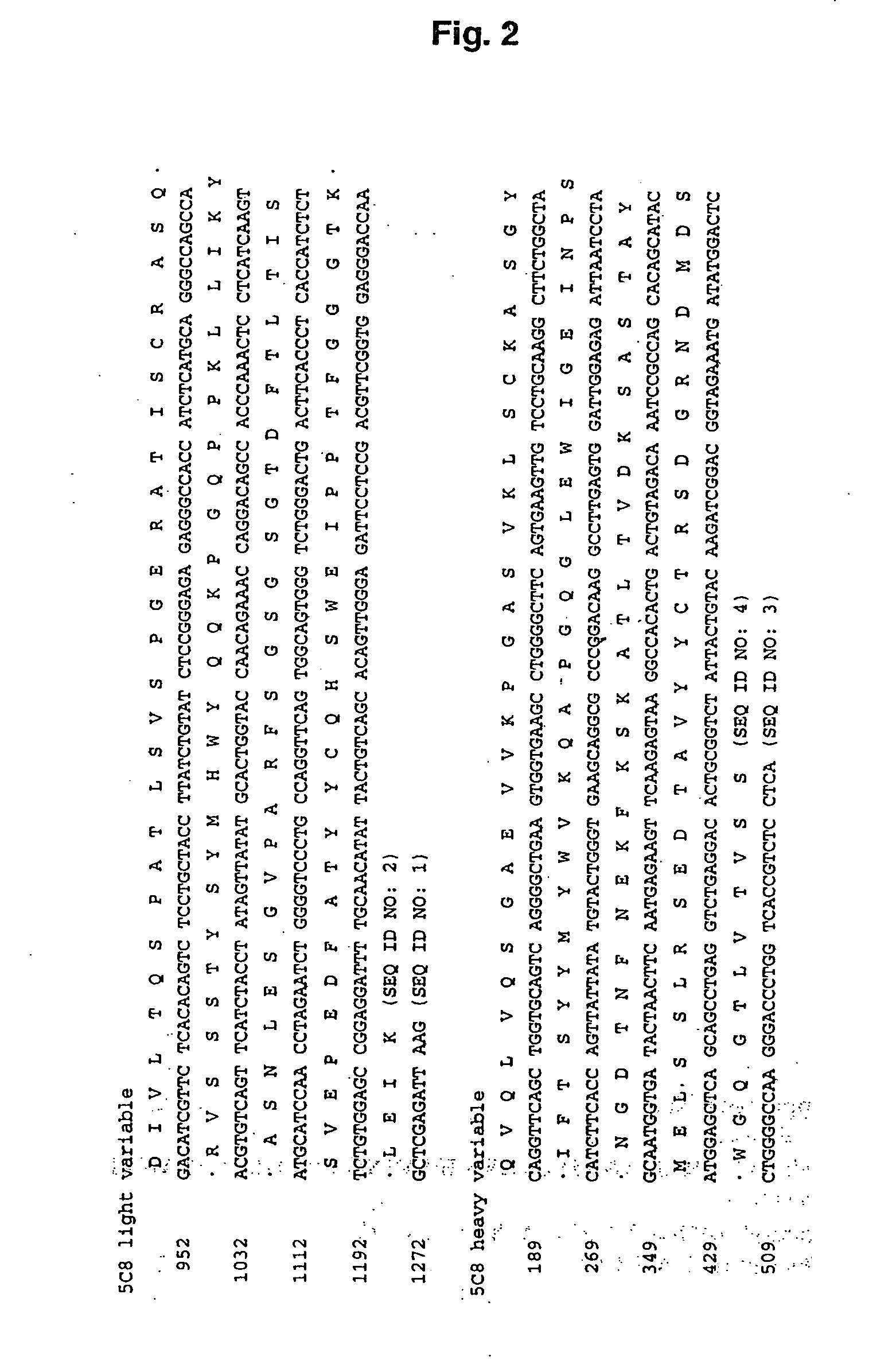Altered antibodies having improved antigen-binding affinity
an antibody and antigen technology, applied in the field of antibodies with improved antigen binding affinity, can solve the problems of restricted use of such antibodies, and achieve the effects of improving affinity, strong affinity for an antigen, and usefulness and success
- Summary
- Abstract
- Description
- Claims
- Application Information
AI Technical Summary
Benefits of technology
Problems solved by technology
Method used
Image
Examples
example 1
Methods of Improving the Antigen-Binding Affinity of an Anti-Integrin Antibody
[0152] In this example, methods for improving the binding affinity of an antibody against a therapeutically relevant antigen target, are described.
[0153] As proof-of-principle, the method of the invention was applied to an antibody against VLA-1 integrin, a cell-surface receptor for collagen and laminin, and in particular, the monoclonal antibody AQC2, which was raised against the human VLA-1 receptor by affinity maturation in mice. AQC2 inhibits the pathological processes mediated by VLA-1 integrin (see, e.g., WO 02 / 083854).
[0154] A variant of ACQ2 with two mutations binds to VLA-1 with 100-fold less affinity than the wild-type antibody. In an effort to restore this binding, electrostatic charge optimization techniques were applied to a crystal structure of the antibody-antigen complex in a two-level procedure to suggest improved-affinity mutants. First, electrostatic charge optimization was used to de...
example 2
Methods of Improving the Antigen-Binding Affinity of an Anti-CD154 Antibody
[0170] In this example, methods for improving the binding affinity of an antibody against a therapeutically relevant antigen target, are described.
[0171] An antibody against human CD154 (also known as CD40 ligand or CD40L; see, e.g., Yamada et al., Transplantation, 73:S36-9 (2002); Schonbeck et al., Cell. Mol. Life Sci. 58:4-43 (2001); Kirk et al., Philos. Trans. R. Soc. Lond. B. Sci. 356:691-702 (2001); Fiumara et al., Br. J. Haematol. 113:265-74 (2001); and Biancone et al., Int. J. Mol. Med. 3(4):343-53 (1999)) which is a member of TNF family of proteins involved in mediating immunological responses, was raised by affinity maturation in mice. The 5c8 monoclonal antibody was developed from such studies and determined to inhibit the pathological processes mediated by CD154 / CD40L.
[0172] In an effort to increase the affinity 5c8 / CD40L interaction, electrostatic charge optimization techniques were applied to ...
PUM
| Property | Measurement | Unit |
|---|---|---|
| dihedral angle | aaaaa | aaaaa |
| concentration | aaaaa | aaaaa |
| concentration | aaaaa | aaaaa |
Abstract
Description
Claims
Application Information
 Login to View More
Login to View More - R&D
- Intellectual Property
- Life Sciences
- Materials
- Tech Scout
- Unparalleled Data Quality
- Higher Quality Content
- 60% Fewer Hallucinations
Browse by: Latest US Patents, China's latest patents, Technical Efficacy Thesaurus, Application Domain, Technology Topic, Popular Technical Reports.
© 2025 PatSnap. All rights reserved.Legal|Privacy policy|Modern Slavery Act Transparency Statement|Sitemap|About US| Contact US: help@patsnap.com



